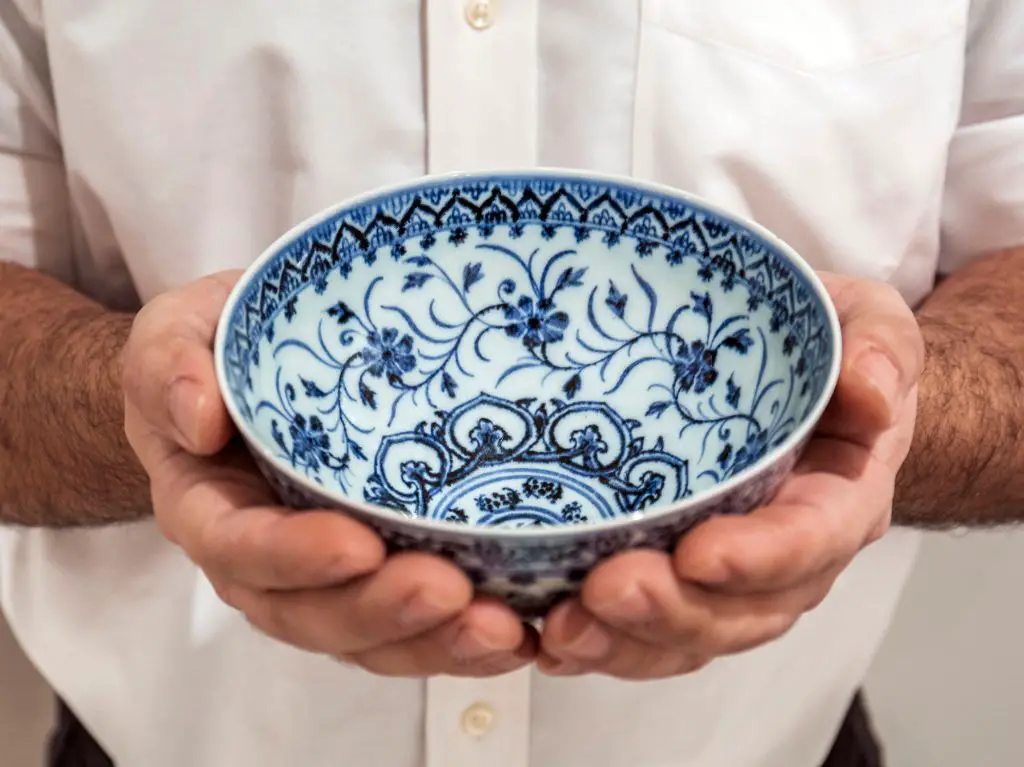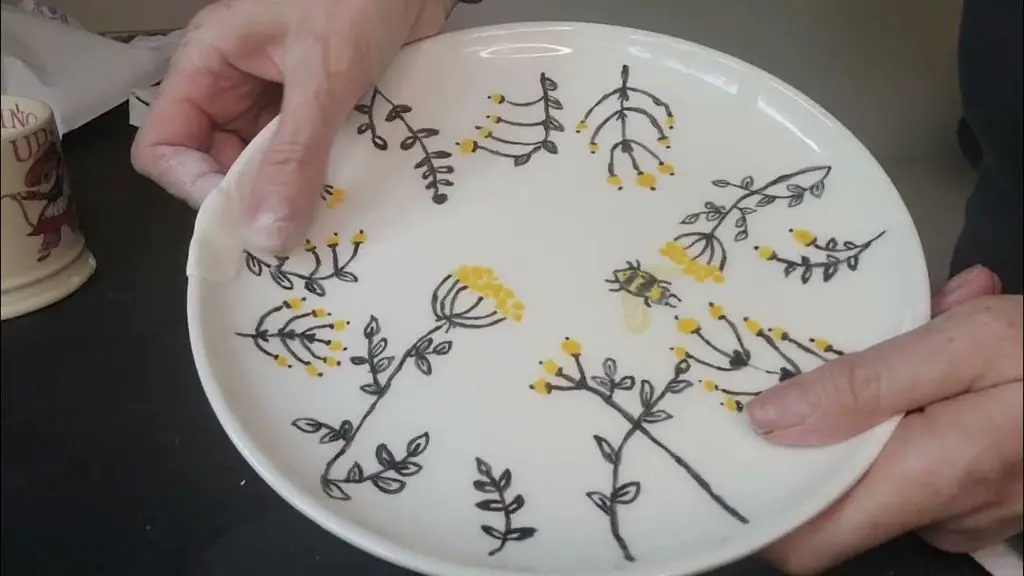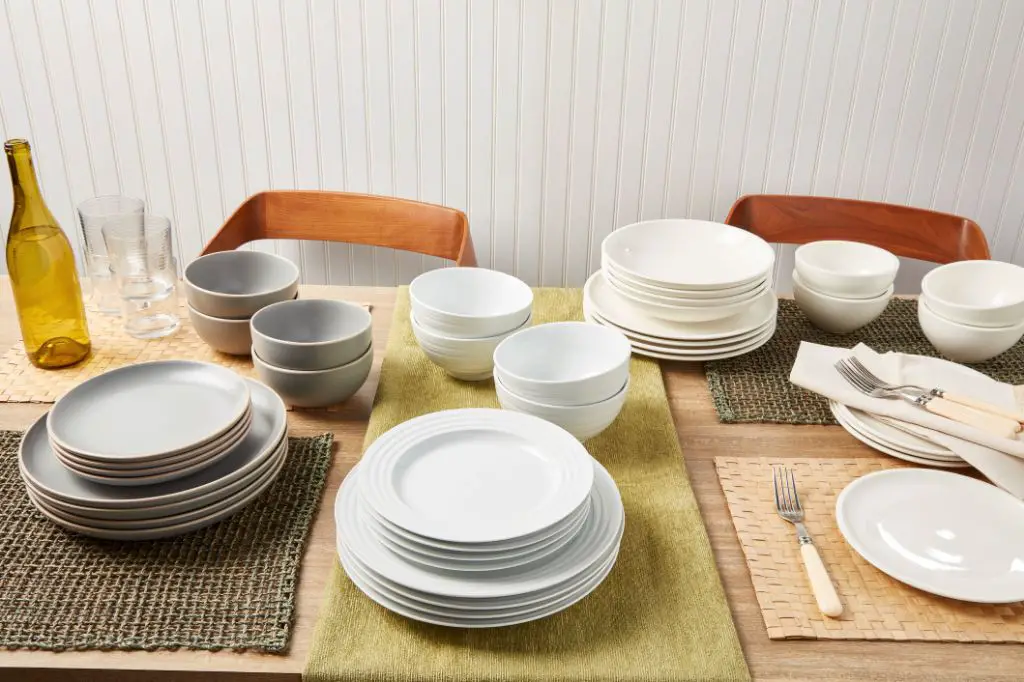Does Porcelain China Chip Easily?
What is Porcelain China?
Porcelain is a ceramic material made by heating materials like kaolin, quartz, and feldspar to high temperatures. The raw materials fuse together and create a hard, white, translucent product. Porcelain is known for its strength, hardness, whiteness, translucency, and resistance to chemical attack.
The earliest porcelain was produced in China during the Tang Dynasty (618-907 AD) (History of porcelain porcelain composition quizlet). Porcelain became highly prized by the Song Dynasty (960–1279 AD) and porcelain production developed significantly during the Ming (1368–1644 AD) and Qing dynasties (1644–1912 AD). Porcelain reached Europe by the 16th century and was widely coveted (“Jingdezhen Porcelain History and Techniques”).
Some common types of porcelain dishes include plates, bowls, cups, and saucers. Porcelain can be plain white or decorated with colored glazes, hand-painted designs, transfer-prints, and gilding (“Painting on Porcelain: Composition and Technique”). It is an ideal medium for tableware due to its durability, aesthetics, and food-safe glazing.
Why Porcelain Can Chip

Porcelain is prone to chipping for several reasons. The main reasons are the brittle nature of porcelain, thermal shock, and improper handling.
Porcelain is made from clay, quartz, and feldspar fired at very high temperatures. This process results in a very hard, but brittle material. According to Dr. Ahmad Al Hokail, the brittleness of porcelain makes it susceptible to chipping when it encounters harder materials or sudden impacts.
Thermal shock can also lead to chipping. If hot porcelain comes into contact with a cold liquid or surface, the rapid temperature change causes expansion and contraction, resulting in cracks and chips. This is why caution should be exercised when exposing hot porcelain dishes to temperature extremes.
Lastly, improper handling like dropping porcelain plates, bowls, or cups can cause chips due to the resulting impact. Porcelain’s hardness makes it durable, but also more prone to chipping upon sudden collisions versus materials with more flexibility.
Factors That Impact Chipping
There are several factors that can contribute to porcelain chipping more easily:
Thinness – Thinner porcelain pieces tend to be more delicate and prone to chipping, especially at the edges and rims. Mass-produced porcelain tableware is often thinner for cost savings compared to higher end or antique pieces (source).
Quality – Lower quality porcelain that uses inferior clay or production methods is more likely to chip or crack under stress. Porcelain quality can vary greatly depending on the manufacturer (source).
Type of Porcelain – Some specific types of porcelain such as bone china or hotelware porcelain tend to be thinner and more delicate. These styles chip more easily than heavier porcelain (source).
Temperature Changes – Rapid temperature changes from hot to cold can cause thermal shocks that may lead to chipping. Quickly washing hot dishes with cold water is a common cause.
Glaze Quality – Poor quality glaze that is not properly fired or bonded to the porcelain can flake or peel off, leading to chipping.
Tips to Avoid Chipping
Porcelain china can chip more easily if not properly handled and cared for. Here are some tips to help avoid chips and cracks:
Proper handling and storage – Be gentle when handling porcelain pieces. Avoid dropping items or stacking them haphazardly. Use padding or dividers when stacking pieces to prevent them bumping against each other. Store pieces in a protected area away from high traffic zones.
Hand wash only – Porcelain should always be washed by hand and not placed in the dishwasher. The harsh detergents and hot water cycles used in dishwashers can cause microscopic cracks over time leading to chips. Delicately hand wash pieces in warm soapy water.
Avoid extreme temperature changes – Sudden temperature changes can create stress on porcelain and cause chipping or cracking. Don’t transfer hot porcelain straight to cold water. Allow it to cool gradually before washing. Also avoid putting very cold porcelain straight into hot water.
Use padding when stacking – As mentioned earlier, use soft padding or dividers between stacked porcelain pieces to prevent them bumping into each other. Crumpled paper, bubble wrap, or dish towels work well. Proper stacking reduces the risk of chips and cracks during storage or transport.
Repairing Minor Chips
There are several options for repairing minor chips in porcelain. Some of the most common DIY methods include using porcelain repair kits, ceramic epoxy glue, clear nail polish, or porcelain paint pens.
Porcelain repair kits can be purchased from many hardware stores or online retailers. These kits contain a porcelain filler material and colorants to match the original item. First, clean and roughen the chipped area, then apply the filler and shape it with the included sculpting tools once dry. Finally, paint the repair to blend it with the surrounding porcelain. Allow time to fully cure before use. Some popular kits are Loctite China & Glass and Sculpt Nouveau.
For small hairline cracks, a clear drying ceramic epoxy glue like Loctite Epoxy Ceramic can work well. The adhesive will dry clear and be less noticeable in the translucent porcelain material. Apply a thin layer and clamp until fully cured.
Another budget repair option is using a few coats of clear nail polish to fill in and cover small chips or cracks. The thin polish layers will dry clear and smooth over the imperfections. Be sure to use 100% clear nail polish without any shimmer or tint.
Lastly, porcelain paint pens allow you to add color precisely to paint over flaws and mimic the original decorations. Brands like Molotow and Pen Touch offer versatile paint markers and sets for china repairs.

When to Toss Out Damaged Items
There comes a point when extensively chipped or damaged porcelain items should be discarded. According to houzz.com, severely chipped dishes with rough, jagged edges pose safety hazards and should not be used (Source 1). Sharp cracks can cut fingers and lips, and bacteria can hide in crevices.
Pieces with chips larger than a dime or nickel are typically recommended for disposal, as are any items where multiple smaller chips have caused an unsightly appearance. If the aesthetic appeal is lost due to excessive chipping, it may be time to let that dish go (Source 2).
Attempts to repair severe chips often fail.Porcelain and ceramic glues rarely hold up through continued use and washing. If you’ve tried gluing back chips unsuccessfully, consider replacing the damaged dish with a new one.
Alternatives to Porcelain
While porcelain is a popular material for dinnerware, there are some good alternatives to consider if you’re concerned about chipping or want greater durability. Some popular alternatives include:
Stoneware
Stoneware is an excellent alternative to porcelain. According to The New York Times (https://www.nytimes.com/wirecutter/reviews/best-dinnerware-set/), stoneware is heavier and denser than porcelain, making it more durable and resistant to chipping. Stoneware sets like Dansk Banded Stoneware (https://www.seriouseats.com/best-dinnerware-sets-7376024) are versatile for both everyday use and more formal occasions.
Bone China
Bone china contains bone ash in its formulation, giving it a delicate, translucent quality while also increasing its durability. The addition of bone ash makes bone china less prone to chipping than standard porcelain according to experts. Popular bone china brands include Lenox and Wedgwood.
Melamine
Melamine dinnerware is made from melamine resin, a durable plastic that is shatterproof. Melamine is ideal for outdoor use, informal dining situations, or in homes with children. While melamine won’t chip, it can become scratched or dulled over time with heavy use.
Tempered Glass
Tempered glass dinnerware has been heat-treated to increase its shatter resistance while still maintaining a delicate glass look and feel. Brands like Mikasa offer extensive tempered glass dinnerware collections that are more durable for daily use than standard glass or porcelain.
Stainless Steel

Stainless steel dinnerware is extremely durable and won’t chip, crack, or break with normal use. It’s great for camping or outdoor dining situations. While not as formal as porcelain for everyday use, stainless steel has a modern, sleek look.
Quality Matters
Porcelain dishes and china can range greatly in quality. But generally, high quality porcelain made by reputable brands is less likely to chip and break than cheaper options.
Lower quality porcelain tends to be thinner and weaker. It uses less refined clay and manufacturing processes. This results in items that chip and shatter more easily from regular use and handling.
High end and luxury brands such as Wedgwood, Royal Doulton, Versace, and Herend use premium ingredients and techniques. Their porcelain dinnerware meets exacting standards for strength and durability.
When shopping for porcelain dishware, examine thickness and heft. Thicker porcelain with some weight indicates higher quality that resists chipping and withstands repeated use. Lighter, thinner pieces often crack and break much sooner.
Stick with reputable brands known for craftsmanship and durable dinnerware. While pricier than generic porcelain, high quality china pays off through lasting beauty and resilience over decades of daily service.
Proper Handling Tips
To avoid chipping your porcelain dishes, it’s important to handle them with care. Here are some tips:
Avoid extreme temperatures. Don’t put porcelain dishes in the microwave, oven, or freezer. The sudden temperature changes can cause cracks or chips. Wash porcelain by hand in warm, soapy water instead of the dishwasher.
Wash by hand. The jostling in a dishwasher can lead to chipping. Handwashing allows you to be gentle. Use a soft sponge and mild detergent in warm water. Avoid abrasive scrubbers.
Use padding when storing. Wrap plates, bowls, and other items with soft materials like paper towels or foam when stacking. This prevents pieces from bumping against each other and chipping.
In general, handle porcelain gently, don’t stack items too high, and avoid any bumps or drops that can lead to chips and cracks.
Summary
Porcelain china is beautiful but delicate dinnerware that can be prone to chipping if not properly cared for. As we’ve discussed, there are many factors that can cause chipping such as extreme temperature changes, improper stacking, overcrowded dishwashers, and general rough handling. However, with some care and caution, the risk of chipping can be greatly reduced.
The key points to remember are to allow porcelain to adjust to temperature changes gradually, hand wash or use a dishwasher with care, avoid overcrowding, and handle pieces gently to prevent shocks or bumps. High quality porcelain from reputable brands is less likely to chip with normal use. Minor chips can often be smoothed over or repaired if cared for properly. But porcelain with multiple chips or cracks should be discarded and replaced.
While delicate, porcelain china remains a popular choice for its beauty, durability with care, and timeless elegance. By handling porcelain dishes and cookware with care and caution, you can enjoy using these lovely items for many years.


